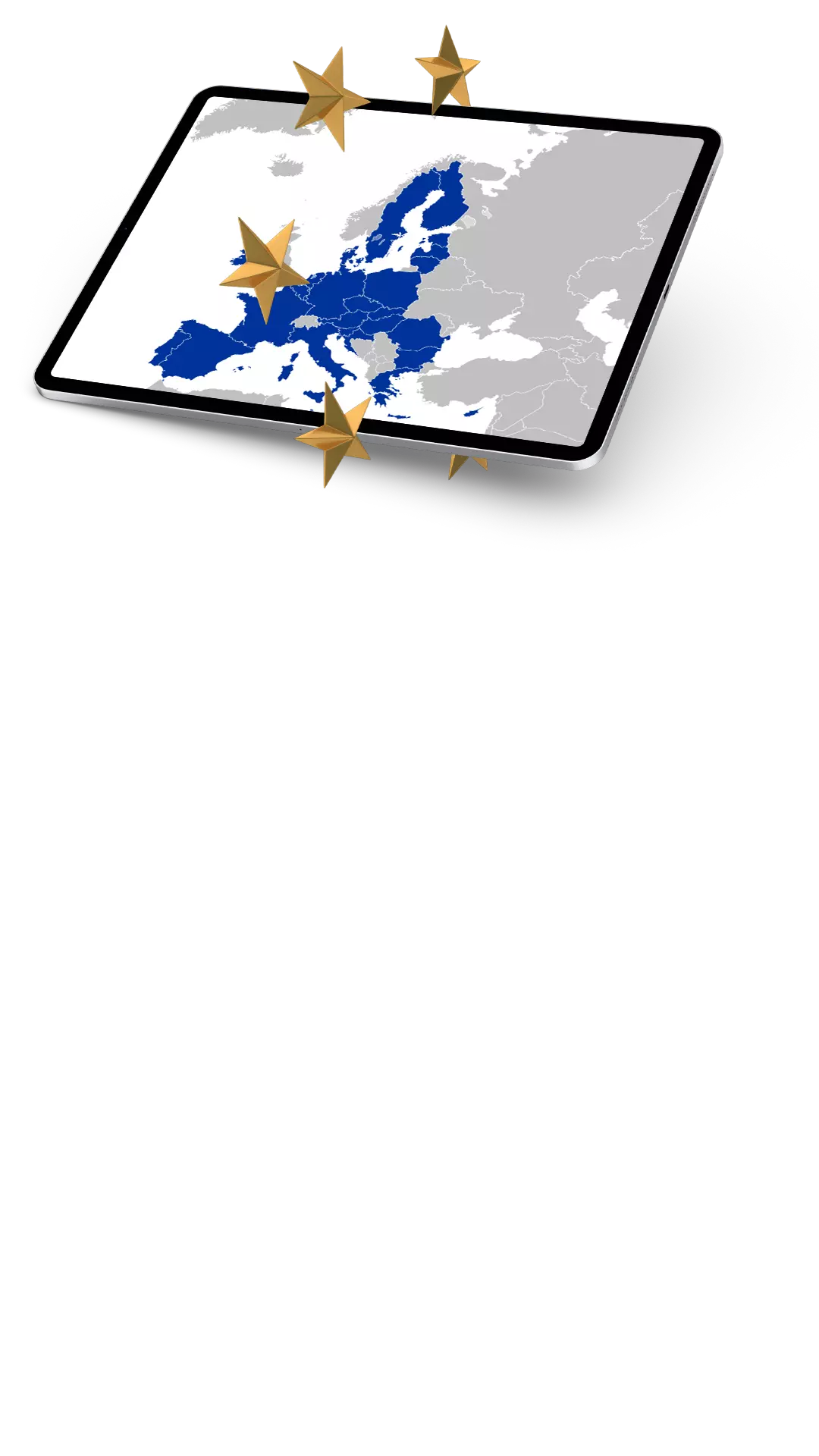Articles & Guides
Personal Branding & Thought Leadership: how to gain digital authority
in a nutshell
Know how, tools, reasons and examples for your personal branding activities. Find out the ways to improve your digital leadership and let your thoughts guide your online reputation (but monitor it with some useful tools!).


Don’t have time to read it all?
Here’s a brief summary of the key points in this guide.
What is Personal Branding?
Personal branding is a process through which a person strategically manages their professional image to define themselves as a brand and position themselves as a professional in a certain topic. A personal brand should:
- • Have a digital mindset
- • Rely on good press contacts
- • Share reliable, qualitative, and relevant content to inspire people
- • Display an outgoing and confidente attitude
- • Have networkability
- • Build a recognizable and coherent appearance on social media and in society
[DIVE IN]
What are the benefits of Personal Branding?
In an ever-changing market, personal branding is the basis for differentiating yourself and maintaining an important stakeholder following. Effective branding:
- • Gives public visibility
- • Makes yourself recognizable
- • Attracts users and their trust
[DIVE IN]
How can I be a leader in the new digital world?
Here are some traits a digital leader should have to change the way business is done:
- • Team-building qualities
- • Good decision-making skills
- • Flexible mentality
- • Embodiment of digitalization
- • Promoter of employee engagement
- • Driven by a digital mindset
- • Open to the introduction of innovative techniques and methods
[DIVE IN]
How can I defend my online reputation?
The construction of a digital image in the minds of users contributes to the formation of the so-called digital reputation. In order to take care of it, personal brands should:
- • Be aware of who they are, what they say they are, and what people say they are
- • Maintain a constantly active monitoring and respond to negative comments
- • Keep themselves on point and adapt to current events
- • Know how to position themselves optimally among search results
- • Build a widespread presence on social networks
[DIVE IN]
LEARN TO RIDE
Ready to surf the digital wave and become a leader in your industry? Join Execute.Club, where executives and managers like you can access resources, connect with peers, and get the no-nonsense help you need to succeed in the digital era.
Enter the ClubIntroduction
Personal branding is a process through which a person strategically manages their professional image to define themselves as a brand and position themselves as a professional in a certain topic. It is a journey of self-discovery and new ways to represent oneself. Closely related to the purposes of personal branding and the modernity of digital leadership is the concept of thought leadership. It is, in short, a company’s (or personal brand’s) strategy to shape and share a socially relevant topic and, more importantly, to secure a degree of authority over it.
An introduction to Personal Branding
By nature, human beings are more inclined to focus on their weaknesses to try to eliminate them instead of focusing on their strengths to try to develop them. This is a paradoxical attitude, which the advent of digital has attempted to disrupt.
In fact, on the internet the approach tends to be the opposite: ignore imperfections and highlight abilities. Conveying an ideal self-image on the Web is the good practice that every entrepreneur or professional tries to adopt today, regardless of the product or service they offer, and it is called personal branding.
An overview
What is personal branding?
The current meaning of the term dates back to 1937, when writer Napoleon Hill introduced it in his book “Think and Grow Rich”. But it was not until sixty years later that the term’s reappearance, though not particularly elaborate, triggered striking reactions.
The article “The Brand Called You” by Tom Peters, one of the leading business management experts of our time, awakened the need for companies to give importance to the way they were perceived by consumers. Then the Internet and social networks came along, and provided anyone with the tools and opportunities to impose their personal brand and distinguish themselves from the crowd.
DOWNLOADABLE FILES
- Personal Branding Canvas – Download now!
Individuals brand themselves and share content, skills and values based on their personality and reputation. Creating your own compelling and real representation is not an activity that has a beginning and an end, but an ongoing investment aimed at reaching specific audience segments through conscious and effective behaviors.
Personal branding today
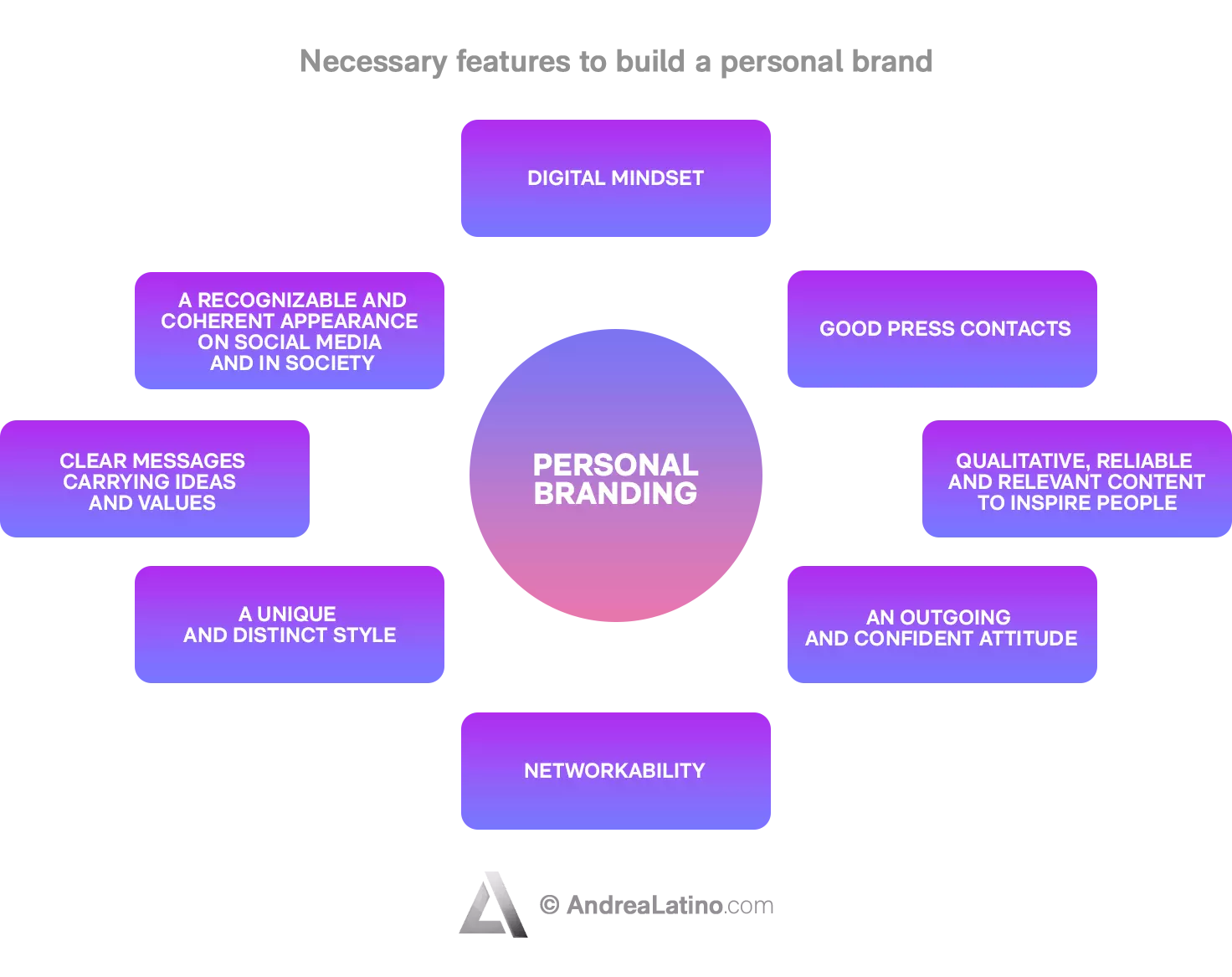
Building a personal brand has become the necessary super trend for anyone who wants to stand out and make a relevant contribution to society – managers, freelancers, scientists, simple employees. Undoubtedly, digital transformation has exponentially multiplied its importance. In order to be noticed, today, it is not possible to avoid persuasive storytelling, since it generates the desired attention and convinces users to decide on which source to turn to amidst an infinity of proposals. After all, the goal is to help them think or understand topics in an innovative way.
A personal brand is based on a person’s identity and conveys their essence, attitudes, motivations, past experiences, and future prospects. It is therefore logical to first set up a strategy (e.g., a SWOT analysis) that identifies and defines what makes the persona unique and different from competitors. But weaknesses should not be underestimated, as the self-description must be as sincere, genuine, and empathetic as possible. It is for all intents and purposes a process: the development from what one is to what one wants to become. The transition from simple technical expertise to broader managerial skills.
Personal brand, corporate brand, and other necessary distinctions
Personal branding focuses attention on the individual, not the company, nor the product or service. It stems from the authenticity of the person, their skills, and their way of thinking. Thus the person is positioned as a brand. Even for doing corporate branding, however, the concept does not change: the company becomes an organism with its own personality. The brand image, in any case, goes through continuous refinement, ranging from creating to maintaining a reputation and monitoring the impression formed among web visitors.
So, this small parenthesis is meant to clarify the following distinction:
- • personal branding: the individual becomes an independent brand
- • corporate influencer: the people who are responsible for ensuring a significant impact on social media for companies, but also the leaders of a company who set the values that should guide the activities of colleagues
- • social CEOs: executives who are active on social networks
- • employer branding: the set of communication strategies aimed at promoting the company as attractive for seeking to recruit talent
Personal branding: what, by contrast, it is not
It may be useful to narrow the definition of personal branding by establishing once and for all what does not fall within its scope. First, it has nothing to do with social media marketing or the mere curating of a personal blog. Nor is it about ego or self-love: it is about pursuing clear objectives based on established skills. Thus, it does not mean “knowing how to sell yourself” by displaying a false image of yourself or rambling about nonexistent added values. Not least because selling requires experience, time, and wide margins for failure.
So better to explain the reasons why users should choose you over your competitors and make it a habit. Finally, personal branding is not acting. The branded person does not wear a mask, assume a role, or bend over backwards to fit external expectations – a strong brand is an authentic brand. Be careful, though. Laying yourself bare and being credible does not mean revealing your private life. Hobbies and passions are fine, but intimate and family matters are best kept to yourself (also because they do not have much influence).
What does it mean to be a personal brand?
Branding yourself means being perceived by users as a brand. “And thank goodness”, you will say: that seems to be the goal. But personal branding is no small commitment. It requires a number of prerequisites, constant updating, and careful planning. People, after all, will see it as the result of a path consistent with the narrative line, principles and messages conveyed. It means that internet users are not only interested in the external factors that a character may offer, but also in their most intimate psychological being, their feelings and personality.
As a consequence, to do personal branding it is not enough to have professional knowledge – you also need a deep inner knowledge that reveals the real motivations behind the desire to be known. Summing up, then, we could say that a strong personal brand cannot lack: a clear message, carrying ideas and values; qualitative, reliable and relevant content, capable of inspiring people; a unique and distinct style; a recognizable and coherent appearance on social media and in society; good press contacts; an outgoing and confident attitude; networkability; and a digital mindset.
What are the goals of personal branding?
A strong personal branding strategy is essential to promote one’s business and stand out from competitors. Basically, the goal is to attract people and customers who feel represented by the personal brand and share its values. Sharing messages, ideas, thoughts and visions is about successfully communicating your achievements to gain recognition in a field of interest. The brand tends to anchor itself firmly in the perception of the target audience, create a special relationship based on trust, and develop a strong network of followers: the community.
Thus, the purpose is to enhance your persona and make it attractive to business partners, employers, or anyone with an affinity for the subject matter. At the end of the day, personal branding does not mean entertainment, but constant work on yourself. Which, mind you, does not necessarily mean changing your character (especially if to meet someone else’s expectations). First and foremost, strengths should be emphasized in order to enhance reputation and show yourself prepared.
Well, I mean, what do you get out of it? You might gain a thought leader position (we’ll get to that). Visibility in the digital world and on the net, a place of honor among experts in the field. The label of opinion leader on a given topic. An active role in controlling and influencing the direction of a thread within an Internet site. The ability to stand out from the crowd and emerge among the top SERP results among the most authoritative sources on the issue under discussion. Do you think that will be enough?
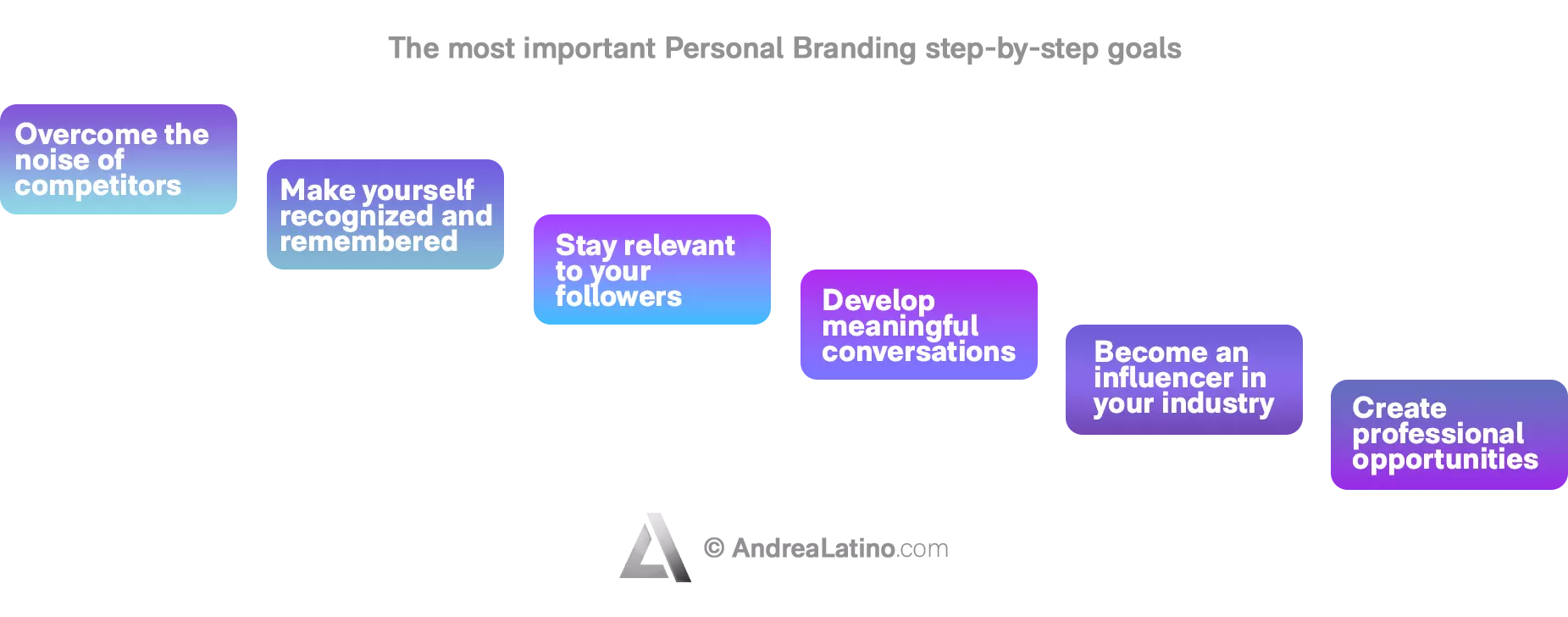
The goal of positioning
Building a personal brand cannot neglect the concept of positioning, as the brand will surely have to compete in an overcrowded market. The term “brand positioning” refers to the positioning of the brand not only in the market, but also in the minds of consumers. It is the strategy adopted to distinguish itself from all others (which, logically, cannot be limited to a logo or slogan). And a winning strategy must start with a differentiating idea – the unique selling proposition (USP).
The unique selling proposition, as the name suggests, is the unique quality of the brand, company, product, or service that ensures something more (or, at least, different) than competitors. An added value that ensures a competitive advantage and highlights the brand. But it is crucial that the distinctive proposition is first and foremost clear to those who display it, otherwise it will not be properly understood by consumers. The USP is the workhorse of the brand, encapsulating its mission and saying so much about the brand to the respective potential audience.
Do you have a Public Affairs & Comms challenge to tackle? Let’s face it. Together.
C-levels from these companies (AND MORE) relied on my expertise to overcome thEIR CHALLENGES IN THIS AREA. And You can, too.
Can I help you?why should I brand myself
After all, why should you build a personal brand?
Many experts and professionals who are particularly valued in their chosen field are not at all known outside of it. This is either because they are not interested in building a personal brand, or they fail to position themselves properly. But in an ever-changing market, digital skills have become a must, and doing personal branding is now the basis for differentiating yourself and maintaining an important stakeholder following.
Refusing to keep a personal brand active means losing control over your image, which would be automatically drawn by user activity. Effective branding, on the other hand, gives public visibility, makes yourself recognizable, and attracts users and their trust. It is a new digital footprint: the way you show yourself online gives shape and life to a new authentic self. But, precisely, expert status in a given field can only become concrete if it is digitally visible. Visibility documents existence.
So, personal branding is not for everyone: marketing yourself requires intense daily contact with strangers, and therefore a constant readjustment to new circumstances. In short, extroverts tend to find it easier to talk about themselves and market themselves than introverts. But I am not suggesting that shy people are doomed to disappear among a myriad of indistinguishable profiles. They too can successfully build their own brand, and Microsoft founder Bill Gates is the proof.
Personal branding examples
From the marriage between blogging and building a personal brand came probably the most recognized example of personal branding in the world: Chiara Ferragni. The famous influencer began her path to fame in 2009, speaking about fashion, style, and travel on The Blonde Salad. Four years later she launched the Chiara Ferragni Collection brand. Forbes Italy included her in its list of 30 personalities under 30 for the Art & Style category, rewarding her revolution in the fields of fashion and communication.
CEO Branding: managers and executives taking a stand
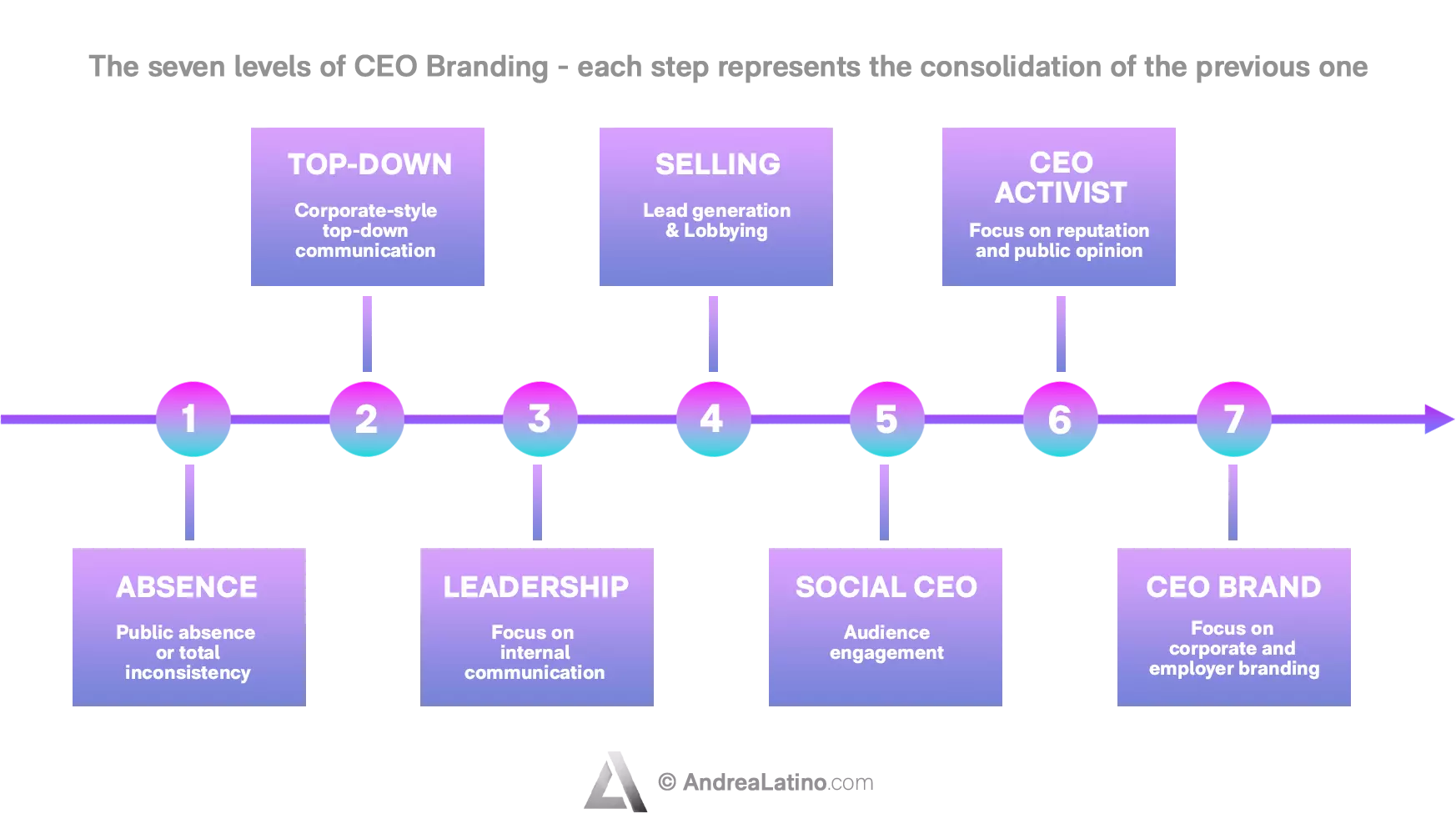
Paul Polman

But in the social media age, it is no longer news that corporate leadership can grasp every opportunity to engage their audiences. To the point that today we speak of CEO Branding. The CEO of a company may become a champion of social or value issues. Problem is, CEO Activists may risk polarizing audiences, unleashing fans and detractors that could cause some reputational issues, especially online. And the impact then typically ends up spilling over corporate reputation.
I’m thinking about the message of former Unilever CEO, Paul Polman, who claimed that “CEOs have to step up to de-risk the political process”. Since his retirement, Polman is calling on business leaders to step into a leadership void and take lead in the climate change battle for a sustainable transformation. He suggested a new model of business leadership based on a wider purpose than just economic gain.
Seema Kumar

Falling in love with science to build credibility around it. That’s Seema Kumar’s dream as Global Head, Office of Innovation, Global Health and Scientific Engagement at Johnson & Johnson. She works at the intersection of science, media, business and society to expand Johnson & Johnson’s leadership as a champion of science and a global health authority.
But, most of all, she’s trying to enhance public engagement with science in order to build trust among people. Seema is a passionate advocate for science and women’s empowerment. It’s no coincidence that she is responsible for Johnson & Johnson’s overall innovation reputation. And she won’t stop pushing until people see the way science impacts their everyday lives, and decide to learn about it, trust in it, and contribute to it.
Dan Schulman

In 2019, PayPal CEO Dan Schulman commissioned a survey to find out how many of its employees were running short of financial resources. He was quite sure the results were going to be really good, since PayPal pays at or above market rates everywhere around the world. But that was not the case. More than 10,000 people claimed they were struggling to make ends meet. So, Dan heard an alarm bell ringing.
Dan Schulman really believes the first element that makes a business fair is decent pay and living standards. That’s why he and his staff worked on data to lower health care costs for the company’s lowest-paid employees by 60 percent. Then he gave every employee an opportunity to own stock in the company. He raised salaries and launched a financial education program to encourage savings.
So PayPal took another survey to see what impact the changes had had. It turned out that employees were four times more engaged and three times less likely to leave the company. Stronger morale creates a workforce that better serves customers and leads to higher returns for shareholders. “The only sustainable competitive advantage that a company has is the skill set and the passion of their employees,” said this thought leader.
know how
How to do personal branding: content, languages, and channels
As mentioned at the beginning of the guide, we are far more aware of our weaknesses than our strengths, as we experience them every day. But the internet is a mirror that privileges the reflection of the best qualities: we “only” need to assimilate the most appropriate communication behavior, demonstrate an open mind and learn to navigate the correct channels. And remember to be authentic: consistency, naturalness and transparency prevail in personal branding. Regardless of the industry, what matters is to create a relationship of empathy with your followers.
At first, then, it is advisable to adopt a professional and serious attitude. Only over time, once your brand has been consolidated, it will be possible to customize the style to make it as distinctive as possible. The important thing is to be able to retain a clear message, relevant content and a monopoly position in the selected subject area. Finally, it should not be forgotten that the creation of a personal brand requires time and effort: it is a conceptual operation whose results will be evaluated in the long run.
The content of a personal brand
The keyword is quality. Find the right topics to increase your visibility and put them in an effective context. And the right topics (as long as they remain consistent with the focus for which the brand was created, of course), can spring from the latest news, current events, the most followed trends. You have to arouse the reader’s interest but before that, you have to be familiar with the topic. It could also be simply a collection of news or posts published by others, accompanied by the appropriate comments aimed at sharing a specific message.
It is important to give texts a sensible structure that facilitates reading and understanding without getting lost in too many details. After all, personal branding aims at search engine optimization, and if an author’s articles are rated qualitatively well, their reputation will increase from the perspective of results from a search engine such as Google. And brand reputation is one of the main ranking criteria, along with competence, authority, and reliability. Positive ratings result in better rankings.
An effective way of doing personal branding that stands as a very valid alternative to written text is video. Images are also part of the content world but, usually, they are simply a way to embellish copywriting. Videos, on the other hand, are a tool that builds a direct relationship with viewers, especially when the person/brand shows up and speaks directly to the camera with familiarity, verve, and empathy.
Languages of personal branding
Of course, to reiterate the supremacy of quality over quantity, communication skills cannot be lacking. I am talking about spelling, comprehensibility, and forms of expression. It is good, then, to write with the selected target audience in mind. In this way, one will avoid resorting to language that is too (or too little) challenging for readers. This will result in the choice to splurge on technicalities and sectorialisms or to dwell on explanations in order to appeal to a wider audience (sectorialisms are words that refer to more specific but not necessarily technical semantic areas).
Overly complicated syntactic structures are generally not recommended, because, especially in blogs and social networks, texts are read while moving or skimmed through roughly. That means there is a need to make sure that essential statements are grasped quickly and remain in the reader’s memory. It is good practice, therefore, to get help from a third party who, by analyzing the soon-to-be-published content, can check for clarity, grammatical errors, and typos.
Another idea would be to include visual effects: bold type, highlighting, appropriately designed paragraphs. But also images, logos, videos and so on. These are forms of language that support the message, enrich it, arouse interest, and help memorization. And why not, they are also a little personal, distinctive touch. Personality also emerges from these stratagems: metaphors, idioms, recurring expressions. The result will be a text that is truly distinctive, illustrative, but also compelling.
Communication channels
A personal brand builds and communicates itself mainly through two platforms: blogs and social networks.
Blogs, unlike what you might think, are a popular, modern, and definitely alive tool. They are a public square that encourages the open exchange of values, experiences, skills, and creative performance. The texts published here are intended to stimulate conversation with readers through opinions, comments, and suggestions, but without losing the grandstand. Blogs provide new impulses, create space to welcome new information, and promote personal brand sovereignty. This is why every website should have a blog.
The Internet then allows content from different sources to be connected through links. A feature that lends itself to the advantage of consolidating or refuting the hypotheses expressed. But above all, useful for positioning web pages on search engines: the use of internal and external links is a prerogative of online writing if you want to appear among the top Google results. The regular publication of a consistent sequence of texts allows you to show yourself as a serious, helpful and confident author.
Social media networks are also an indispensable tool for personal branding. They represent, indeed, a sounding board for spreading your personal identity to a larger catchment area. They are also a conversation platform that allows direct interaction with the public through questions, polls and feedback. But danger is always around the corner: just as they can help build stronger relationships and generate loyalty to the personal brand, they also encourage questioning or possible criticism.
My advice is, of course, to remain calm, and to value – when possible – negative comments as an opportunity for growth. Facebook, LinkedIn, Instagram, Twitter, YouTube, and other socials still possess specific ways of using them, but each is functional in transforming the person into a brand with a narrative and valuable content. And they foster better Google rankings for future searches.
Be a digital Leader
What is digital leadership?
Tools and services that seek to convey content and produce consistent messages to ensure relevance within the network converge in personal branding. The changes induced by the Digital Transformation – which have dragged behind them virtually every business sector – have not spared even the management and organizational sector. And just as the ways, times and functionalities of the workplace have changed, so has the leadership of employees, teams, and bigwigs.
Digital leadership thus describes new modes of management that rely heavily on the cooperation and participation of the entire team. It is a contemporary model, moving away from the concepts of verticality and hierarchy to embrace the new smart work processes. There is no clear definition yet, but we could say that digital leadership means coordinating people and organizations within a digitalized environment – an environment provided with the tools and services necessary for in-depth personal branding.
Features of digital leadership
Today soft skills such as flexibility, tolerance, and the ability to work in a team have become more important than proper technical skills. Processes are executed through digital tools, decisions are based on big data, which can be measured and evaluated. Digital leadership embraces and disseminates the benefits brought by big data. This is because companies must share a vision of digital change, assimilate the required skills, and meaningfully engage their employees.
The new digital governance transforms business in a technological sense and requires knowing how to govern IT tools and processes in relationships with stakeholders and within the company. It then becomes crucial to create engagement among employees, as an engaged worker possesses a shared vision, offers less resistance to change and is able to identify opportunities never previously considered by management. Therefore, digital leadership is much more common in startups, where managers are often young digital natives.
On the contrary, digital leadership is much more demanded in companies that find themselves having to demolish old structures firmly anchored in the system for decades. Through digital leadership, yesterday’s, today’s, and tomorrow’s managers learn to direct their employees through a complicated transition phase to be ready for the challenges of the future. The leadership class is responsible for reshaping workforce behavior and setting new timelines. It is a process that requires patience, empathy, resolution and, most importantly, the right digital means.
What are the traits of a digital leader?

New forms of smart and agile work imply the need to demonstrate proven leadership skills. Changing the way business is done means identifying in advance the new areas in which the company will excel and designing a precise path of technological renewal to be completed within a tight timeframe. A digital leader, then:
- • initiates the restructuring of the company and the abandonment of analog while promoting employee engagement
- • must embody the digitalization of their enterprise, acting as a beacon for all personnel in terms of both the application and practical use of new technologies and the attitude toward them
- • is characterized by an in-depth knowledge of media and driven by a clear “digital mindset”
- • possesses a flexible mentality when dealing with unfamiliar situations
- • opens to the introduction of innovative techniques and methods
- • has team-building qualities and good decision-making skills
- • doesn’t have to know everything, but should be able to form a team of people with the necessary know-how
Many companies formalize the role under the position of Chief Digital Officer (CDO), relying on their expertise to transform each department. However, many decision makers still lack the disruptive force capable of influencing employees for the purpose of coordinating transformation. Only a subset of leaders, in fact, can actually consider themselves “digital”.
Those who already call themselves such without the right to do so will have to realize that this is a far more complex role than it might have seemed. Companies that are — quite rightly — in a hurry might apply a screening strategy to identify, train or attract their digital leaders from outside.
Think it through
What is thought leadership?
As I already said, the concept of thought leadership is intimately related to the purposes of personal branding and the modernity of digital leadership. It is a unique position that companies or personal brands earn by spreading inspirational ideas and values to influence the mindset with which customers and stakeholders address issues they care about.
Therefore, selling products and services is not the primary focus: thought leaders spread unique insights, revealing a peculiar worldview within which products and services become the means to solve customers’ problems. Thought leadership, among other things, allows you to distinguish yourself from the competition and create a pull effect, as consumers will always turn to the same trusted provider as they recognize you as an expert in your field. After all, new ways of thinking bring about changes in the market and in business models and, as a result, in customers behavior. Always, if possible, for the customer’s benefit.
Another significant advantage is the ability to impose higher prices by playing on the trust provided by customers because of the constant proposal of innovative solutions. It is fair to point out, then, that translating thought leadership with “opinion leadership” is a bit vague: businesses and personal brands are not based on opinions like political candidates, but on the transfer of actual knowledge. In fact, thought leaders stand as reference points for specific topics, which allows them to guide the behavior of their respective targets at will.
Goals and skills of the thought leader
A brand, personal or otherwise, can go from being a mere market participant to a cultural institution before achieving recognition as a thought leader with measurable impact. The ultimate goal will be to acquire new customers and create an active community of true fans who passionately collaborate with and for the brand. A thought leader knows how to use unconventional, previously utopian methods to solve common problems and turn their visions into reality to actually convey concrete benefits to their followers.
Thought leaders know how to integrate the topics they talk about with the strategy, skills and goals of the company they work for. But they do that with originality, advancing reformist proposals that don’t just rehash old concepts. People are sick and tired of hearing the same old stuff; they want to move away from the usual conventions. And doing so takes courage, resourcefulness, but above all preparation. It is crucial that the published content is relevant to users, understands their needs and priorities, and anticipates potential future threats. It then becomes important to maintain an open and ongoing dialogue with customers, which ensures trust.
Supporting your claims with data and facts or presenting yourself in a professional manner, however, are also two factors that ensure credibility for the speaker. The latter, for their part, must be willing to share with the audience the vast amount of information they possess, unfiltered, using the communication channels best suited for the identified target audience and their own abilities. Thought leadership is not just a marketing tool, it is a process that involves quality norms to ensure logic, relevance, and timeliness. It is a proven tool to set companies and personal brands on the road to success and growth.
Some examples of thought leadership
Jostein Solheim
Please, do not think that you can always make it by yourself. We often underestimate the importance of guidance — a model from which to start and then refine our leadership independently and in an original way. So, to sweeten this lesson a bit, I propose as my first example Jostein Solheim, CEO of ice cream company Ben & Jerry’s from 2010 to 2018.

Before becoming CEO, he had worked for Unilever’s many ice cream brands (today he is Group CEO for Unilever’s Health & Wellbeing companies) to the point that he called himself “an ice cream guy.” But, as he’s more than that, Ben & Jerry’s is more than just an ice cream chain. It is an organization dedicated to making a social impact. And Solheim has embraced its philanthropic vision too.
“What inspires me,” Solheim said, “is what social impact can we create with this business.” So, he has led the company to establish public positions on racial justice in the U.S., environmental activism, and even private prisons. In short, Solheim really sees Ben & Jerry’s as a leader in ethical change. ‘Cause today, making a values-led company also highly profitable is major step in changing the usual business model.
Indra Nooyi
You might think that a large multinational corporation like PepsiCo has little or nothing to teach us from an ethical business practice perspective. Well, former chairman and CEO Indra Nooyi might make you reconsider. From 2006 to 2018, she kept trying to push PepsiCo in new and more ethical directions. Nooyi devised a sustainable-growth agenda for the company based on three pillars. The first one was about health and well-being. In fact, Indra didn’t like PepsiCo to be known merely as the junk food and sugary soda company. So, she tried and made sure that its traditional products were not unnecessarily unhealthy.

The second pillar was focused on the environment. Nooyi — who grew up in a water-distressed city in India — wanted to use PepsiCo’s great resources to produce beverages that conserve water better while encouraging greater energy conservation and recycling efforts. The third pillar was about giving greater voice to people who typically lack power like women and minorities in order to make them feel comfortable and supported in the company. This is all part of what she calls “Performance with Purpose.”, i.e., recognizing that a company’s performance in the marketplace is strictly connected to seeking ethical and sustainable approaches.
Mary T. Barra
In 2014, Mary T. Barra became the first woman ever to hold a CEO position at a major international automaker — namely, General Motors. The company was undergoing a remarkable decline in influence and prestige, heavily affected by the Great Recession. As a result, it had to seek bankruptcy protection and government support.

And yet, just a few years later, GM went back to being a healthy and wealthy company thanks to Barra’s efforts to transform its clumsy bureaucracy, and encourage diversity of thought, innovative ways of dealing with problems, as well as working more closely with many stakeholders.
When news stories regarding possible defects in the GM compact car Chevy Cobalt emerged, Barra firmly announced that “whatever mistakes were made in the past, we will not shirk from our responsibilities now and in the future. Today’s GM will do the right thing.”
get your name out there
What is digital reputation?
The digital era, as we have seen, allows anyone to put themselves on stage. It is media self-representation, the success of which depends not only on the content “centerpiece”, but also on the ability to use search engines and data filters. Search Engine Optimization strategies help personal branding to create in search results an image that is positive, professional, or at least in line with your goals.
And this is exactly the last topic we will address: the construction of a digital image in the minds of users, which contributes to the formation of the so-called digital reputation. Every personal (and corporate) brand, in fact, enjoys a certain reputation, no longer shaped through opinions expressed verbally, but mostly determined by information found online. Any activity on the web leaves, in fact, traces that need to be monitored.
Forum comments, social media posts, blog articles, evaluation platforms – these are all digital arenas that help shape people’s conception of a brand or company. But the Internet is an environment full of pitfalls, and digital image is a very delicate aspect. Indeed, it does not always correspond to reality, and once it is fixed in users’ minds, it is very difficult to succeed in changing it (especially if it is negative).
Digital reputation: definition and some useful tips
Digital reputation is the image that each of us – but more particularly companies and personal brands – builds on the Web, through sharing material and discussions on forums, blogs and social networks. We could break it down into three components:
1) who you are, that is, your identity in real life (so, for a company, what it does, what products it sells, what services it offers, and so on)
2) what you say you are, that is the image you would like to convey to the outside world (and this is usually taken care of by the public relations department)
3) what people say you are, i.e., the idea that different people (customers, partners, employees, candidates, potential leads, etc.) have now made up about the company or brand
Taking care of your digital reputation requires being aware of the three dimensions and trying to balance them. A positive impression allows you to differ from your competitors and be more attractive. But every cloud has a silver lining: initiatives “rejected” by digital public opinion can be turned into useful evaluations so as not to repeat mistakes in the future. User reviews strongly influence a brand’s image, to the point of shifting the quality of content to the background. For this reason, it is good to maintain a constantly active monitoring and respond to negative comments.
It is also important to keep an eye on everything that is going on in the respective field of reference, to keep yourself on point and to adapt to current events. This is how to attract attention and strengthen credibility. Indeed, the strategy adopted should be able to respond appropriately to customers, suppliers, and competitors. Proactivity is the right attitude to increase the chances of being properly appreciated. On the other hand, if, for example, your website is not registering a good conversion rate while the bounce rate is particularly high, it means you are not doing a good job in digital reputation management.
Often, by the way, it is not enough to present the company or yourself on the Web: you need to know how to position yourself optimally among search results. In this regard, the query provides a set of results previously searched for by Internet users (PAA, People Also Asked). This is essential information for identifying the keywords to be included. A widespread presence on social is also becoming critical: users’ trust in the brand increases if they find more qualified ads by searching for a branded business on Facebook, Twitter, or LinkedIn. There is no shortage of risks, of course, but negative comments can be quelled by constructive responses.
Digital reputation on social networks
Any post, comment, photo, or video that is published on social media becomes public fact, available to millions of people. Social media are free spaces on which to expose ideas, facts, and rumors, and for that very reason they often spiral out of control. They are territory into which many people venture without knowing what they might be getting into. Here, unhappy customers can freely vent anger and frustration, risking undermining the reputation of companies or public figures if they find an audience inclined to agree with them.
Social media are also an indispensable tool for personal branding, which comes to form from the body of published content. But they are also a tool within the reach of recruiters, HR managers and employers. This means that, today, the analysis of a resume could be accompanied by a search on social networks to check the relevance of a profile to the job description. So remember to think twice before sharing that meme that made you laugh so hard and check the account privacy level.
In addition, it is not uncommon for the first Google SERP results to refer to Facebook, a platform where, on the other hand, it is also not uncommon to unintentionally overstep the bounds of excess. Recruiters are well aware of the playful intent of Facebook compared to, say, LinkedIn, but in any case, sharing content that is distasteful or in stark contrast to company policies will not be a competitive advantage over other candidates. Statistics say that one out of three recruiters have discarded a valid resume after looking at a candidate’s online profiles.
How to monitor digital reputation: some useful tools
To sum up, we have realized that digital reputation can equally launch or destroy careers. So we’d better understand how to keep an eye on it so that we can respond to negative comments and provide feedback in a timely manner.
• Google Alert is a program that collects posts, articles, and news stories in the search engine’s database. By entering the name of the company, brand, or other related keywords, the software returns email alerts of each detected mention.
• Social Mention monitors more than 80 social media sites, including Facebook, Instagram, and YouTube to provide information on the likelihood of a brand being discussed on a platform, the ratio of positive to negative mentions, the frequency with which people passionate about the brand talk about it, and coverage (the number of individual users mentioning it).
• Chatmeter is a tool that helps analyze user feedback and improve the user experience. It notifies stakeholders of any new postings related to their brand, but at the same time allows them to monitor competitors to compare activities. A widget, then, allows reviews released on external sites to be carried over to the personal website.
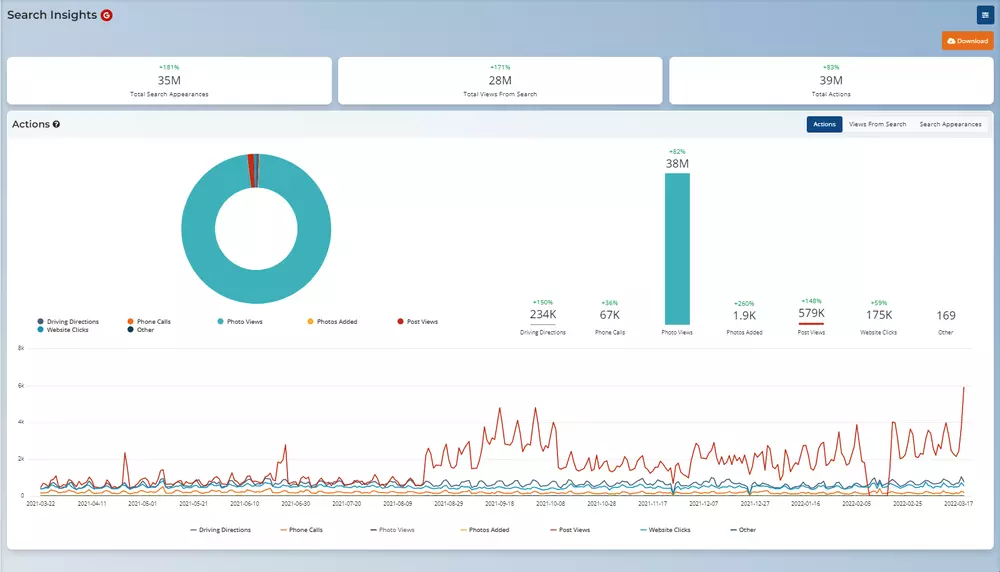
• Finally, search engines are the easiest and most traditional way to check digital reputation: simply type in the name of the brand or website to receive a general response of the opinions expressed by people who have dealt with it.

An important message for you
Hi there! I hope you found this article insightful.
Allow me to introduce myself. I’m Andrea Latino, the author of this article.
I have spent over a decade earning the trust of world-class multinationals, institutions and startups for their digital and innovation initiatives.
Are you curious about my story and how I could help you?
See how I can help youStay in wonderland
Let me show you how deep the rabbit hole goes.
Here are more Articles & Guides:

Articles & Guides
Digital Communication: how to develop an effective one
March 15, 2023
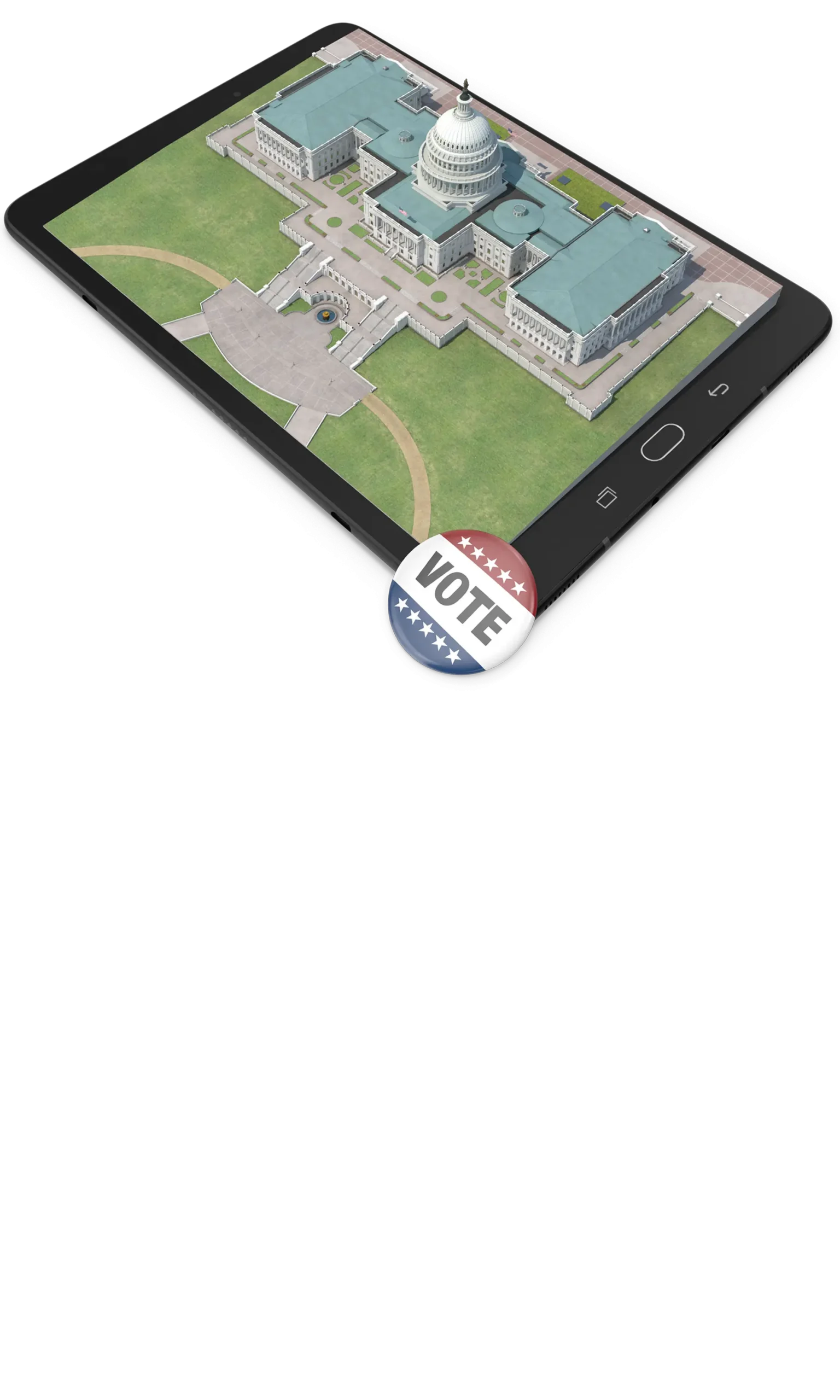
Articles & Guides
Digital Political Communication: doing politics in the age of social media
March 15, 2023

Articles & Guides
Digital PR: public relations in the digital age
March 15, 2023

Articles & Guides
Digital Public Affairs: how to employ effective institutional communication
March 15, 2023
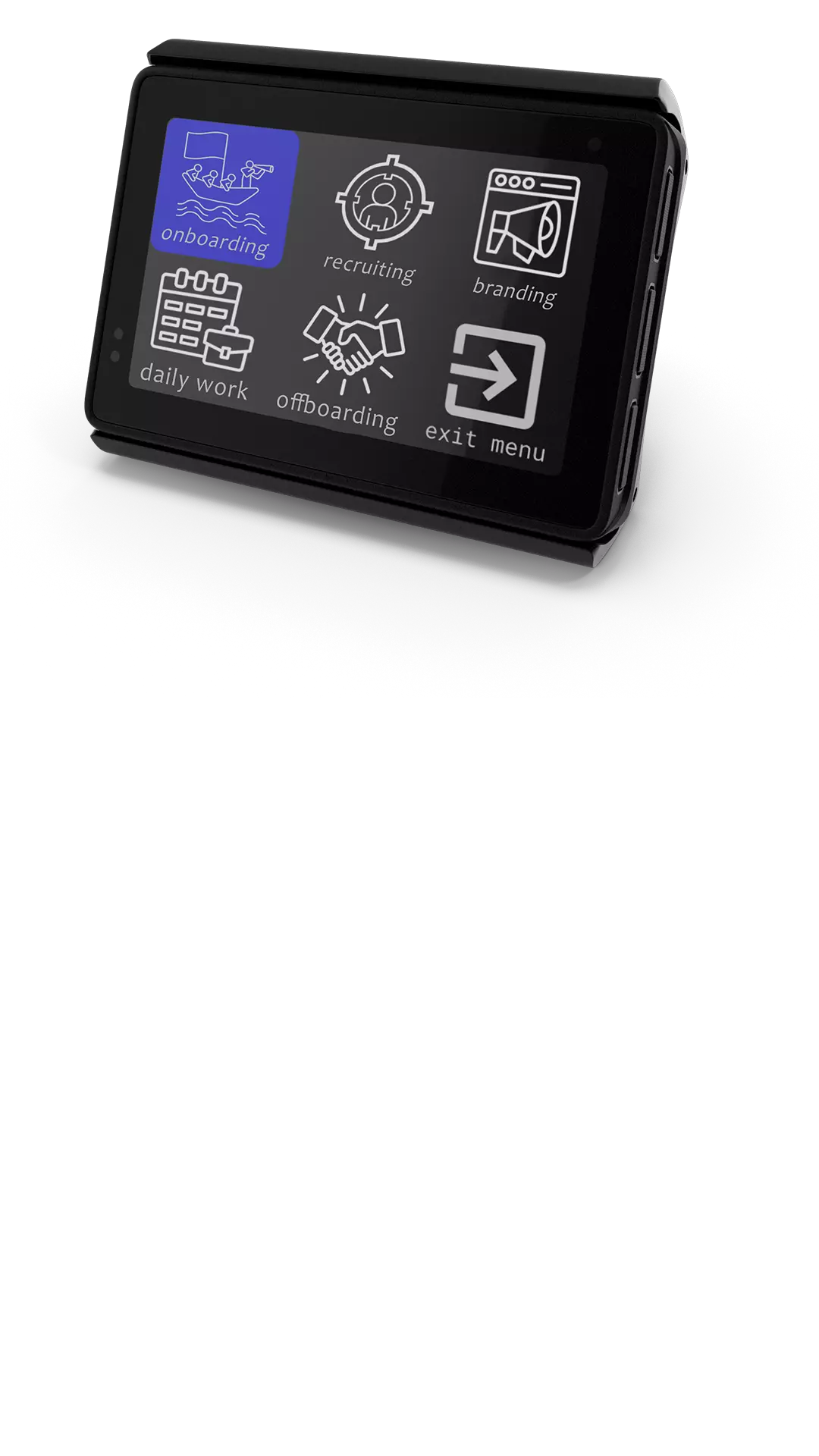
Articles & Guides
Digital Transformation for Human Resources: stages, tools and new skills
March 15, 2023

Articles & Guides
Editorial Plan: how to build a winning one
March 15, 2023

Articles & Guides
Employee Journey: how to track employee experience in 6 simple steps
March 15, 2023

Articles & Guides
Innovation Strategy & Innovation Management: best practice and examples
March 15, 2023

Articles & Guides
Digital Tools & Innovation Resources: the best sources for your innovation process
March 15, 2023
